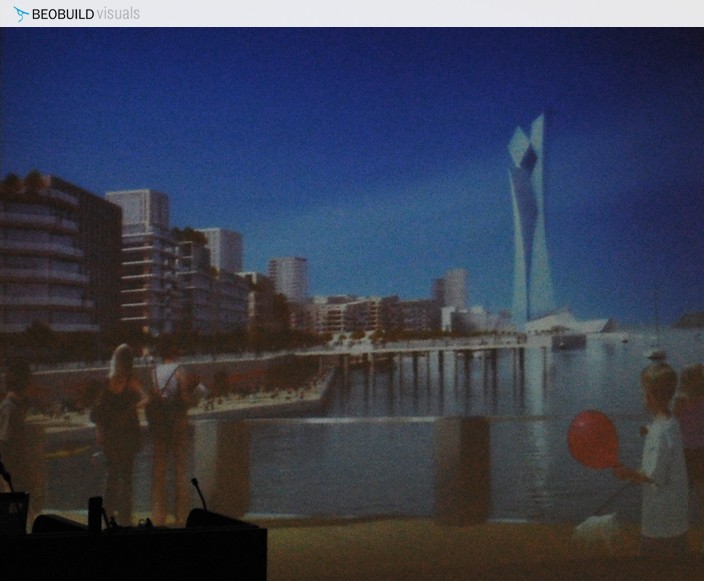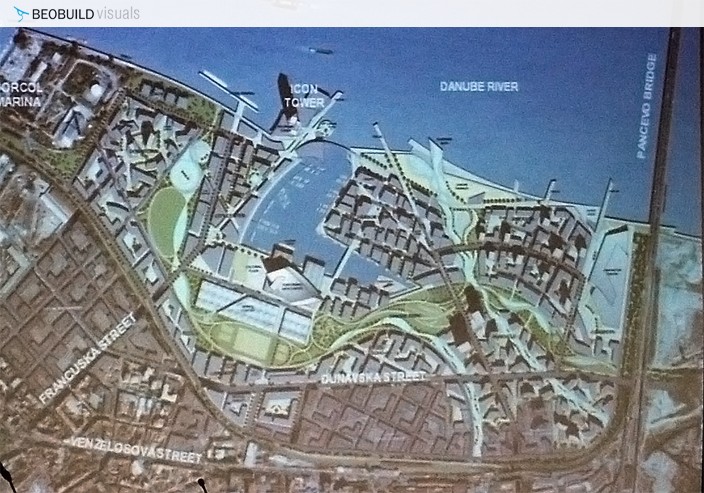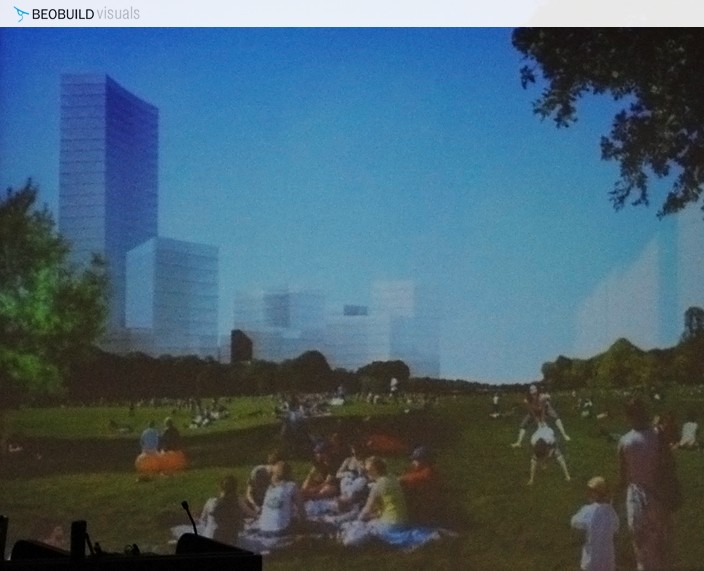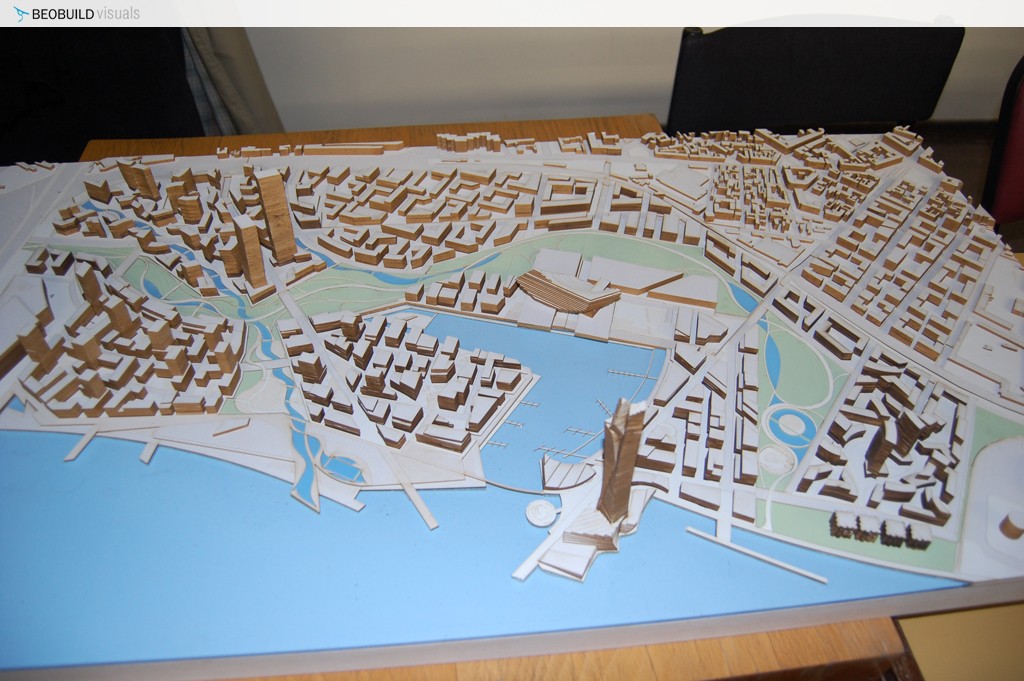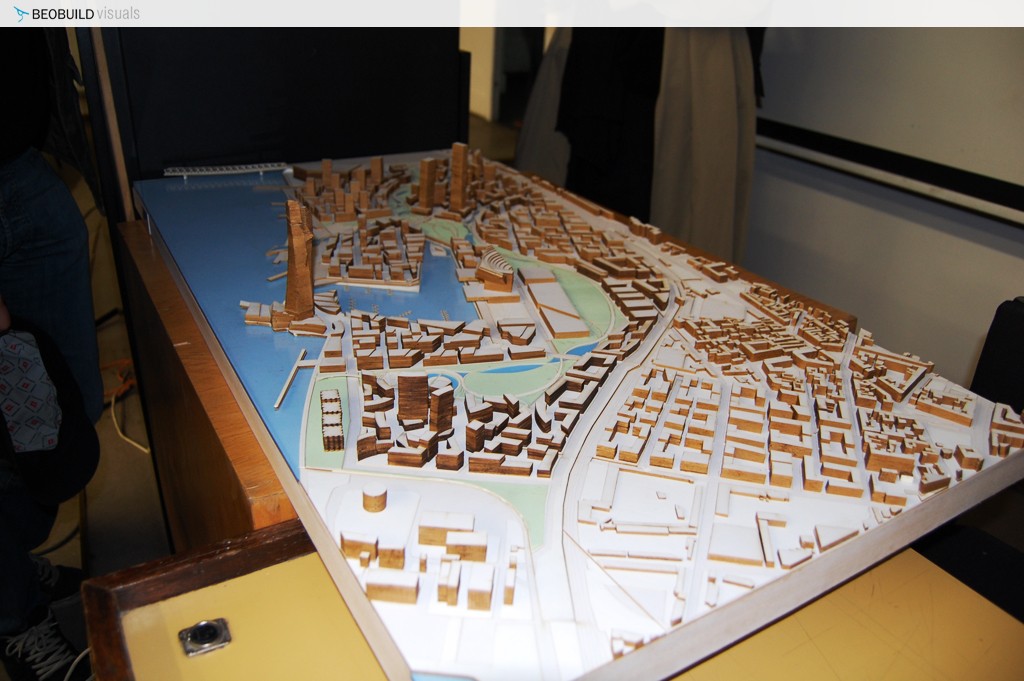The Port of Belgrade is located between city neighborhood “Dorćol” and Danube, taking up one of the potentially most exclusive piece of land Belgrade has to offer at the moment. Today it is characterized by large old warehouses, chaos, transit traffic, disorganization of the space, and the city center, located 10 minutes away, has no contact with it. Since the Port was privatized, the ambitions have risen, and the new company – The Port of Belgrade, A.D. – didn’t waste time, they employed the world famous architect Daniel Libeskind to create a master plan for the Danube’s waterfront in Belgrade.
Daniel Libeskind, born 1946 in Łódź, Poland, made his world fame by winning the competition to be the master plan architect for the reconstruction of the World Trade Center site in New York. On March 2nd, in the amphitheater of the Belgrade’s Faculty of Architecture, he presented the master plan for the development of the Port of Belgrade. Students, professors, experts and press showed unexceptional interest in it – the amphitheater was full, and in the halls TV screens were installed, broadcasting the presentation live.
Master plan for the Port of Belgrade will completely reorganize the space, with partial preservation of some buildings and change of their function. The interesting idea of this plan is to divide the whole area in seven quarters with a specific characteristic, where each would be a sustainable neighborhood for itself. Every quarter would have its spaces for relaxation in a form of well organized greenery. As the main goal of this project is sustainability, although project includes large urbanization of the area, the whole neighborhood is enriched with a large and dynamical park. Beside this large public park space, the entire project includes number of different venues that will ensure function and quality of the neighborhood.
The water basin inside the Port will be used as a marina with a variety of contents provided in the buildings surrounding it. A special place is reserved for the culture – right next to basin there would be a library, while the central position will be held by Performing Arts Center. The investors know as well that they must avoid constructing a mono-functional development, like New Belgrade was couple decades ago. The contents of this neighborhood will attract people to come to this area, in an attempt to return this riverfront to its supposed function. Francuska Street will be extended to the river, forming a Waterfront Plaza in its end. On this Plaza Libeskind planed a large ‘Icon Tower’, 60 to 70 floors high, which would dominate the port, even maybe Belgrade, and could be seen from all important places of interest in Belgrade, but especially from Danube river. The waterfront will be also divided into several sections, and apart from the classical “stair-case” promenade, there will be a marina and a large beach, where residents of Belgrade and their guest could enjoy warm days.
All quarters, envisaged by this master plan, would consist of buildings in different sizes and shapes. Although it is a very large development area, this way it is possible to avoid architectural repetitions and template construction. With very well organized leisure areas, Liebeskind managed to break high density concept of this project common for the old part of Belgrade. Some even criticized that the area won’t connect well with its surroundings, but Mr. Libeskind said he hoped that future development would bring near-by areas closer to his concept. Representatives of the Port of Belgrade showed determination to put this project into practice, however, they have stressed that this big project was almost never before introduced in our city and that its implementation may take up to a decade or more. The development of this project is very conditioned with infrastructure growth and some of the areas could even start development soon with the existing one. The rest of the project should be followed by substantial infrastructure investment on the side of the local government.
The key word is "maybe", since the project itself is a vision with a strong perspective, that was introduced in the eve of probably the largest economic crisis that happened to the mankind. However, we can still hope that this master plan will not end up as one of the many forgotten ideas. As Libeskind said ‘The Empire State Building’ was built during the depression years, still one is sure, projects like this could prevent recession becoming a depression.
Daniel Libeskind in Belgrade
